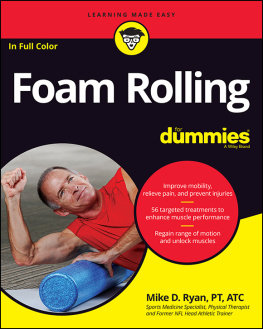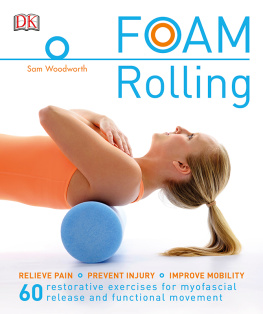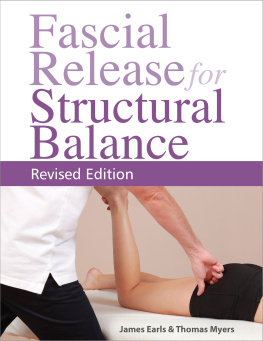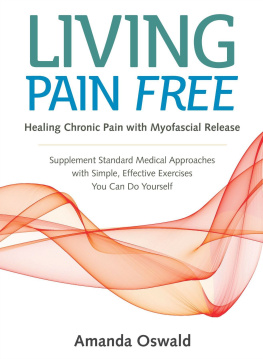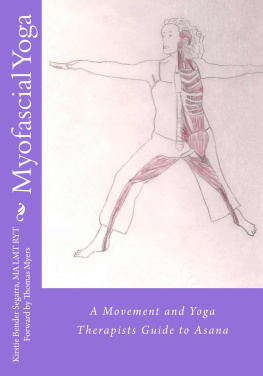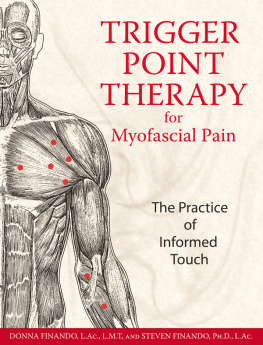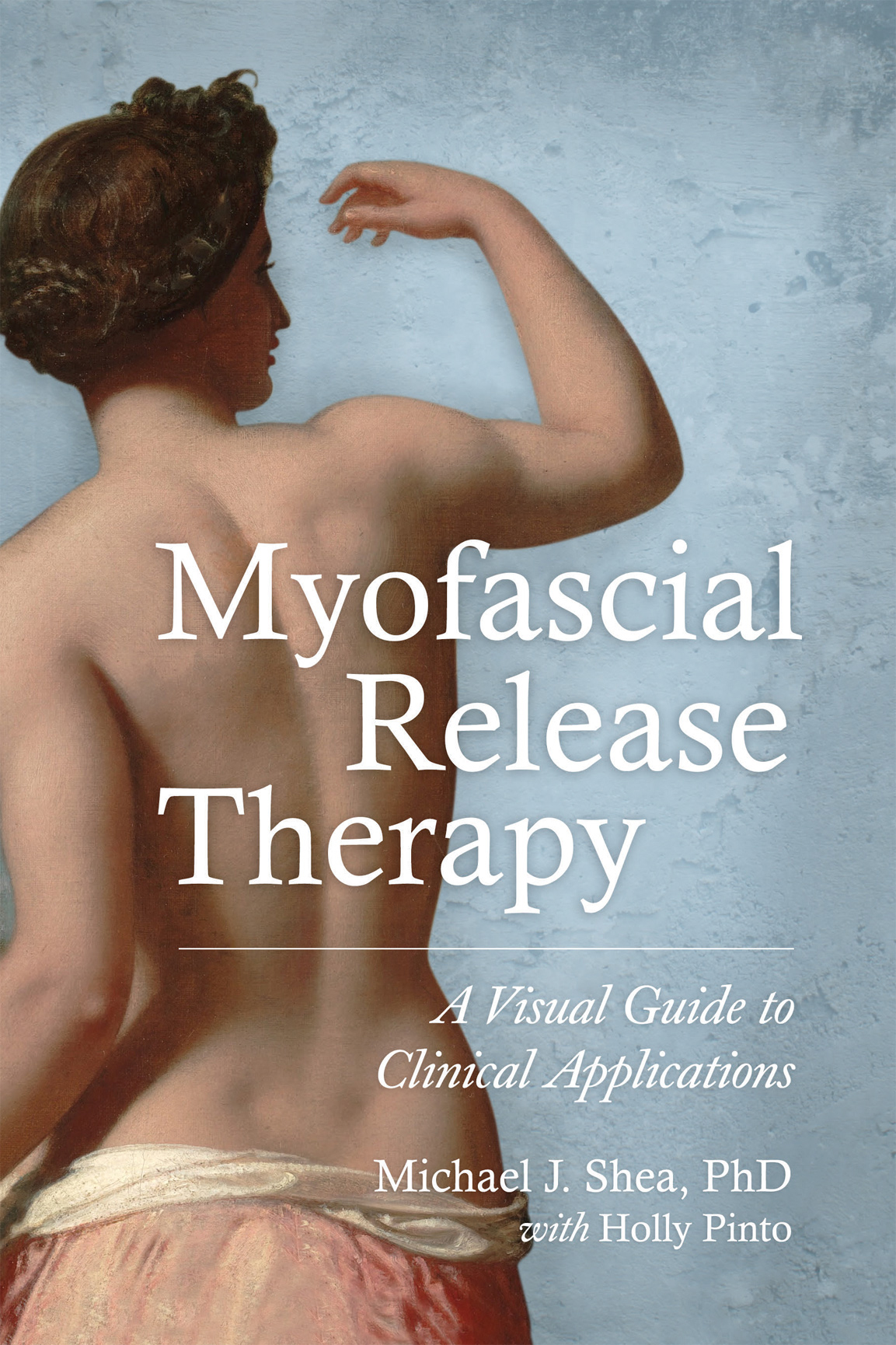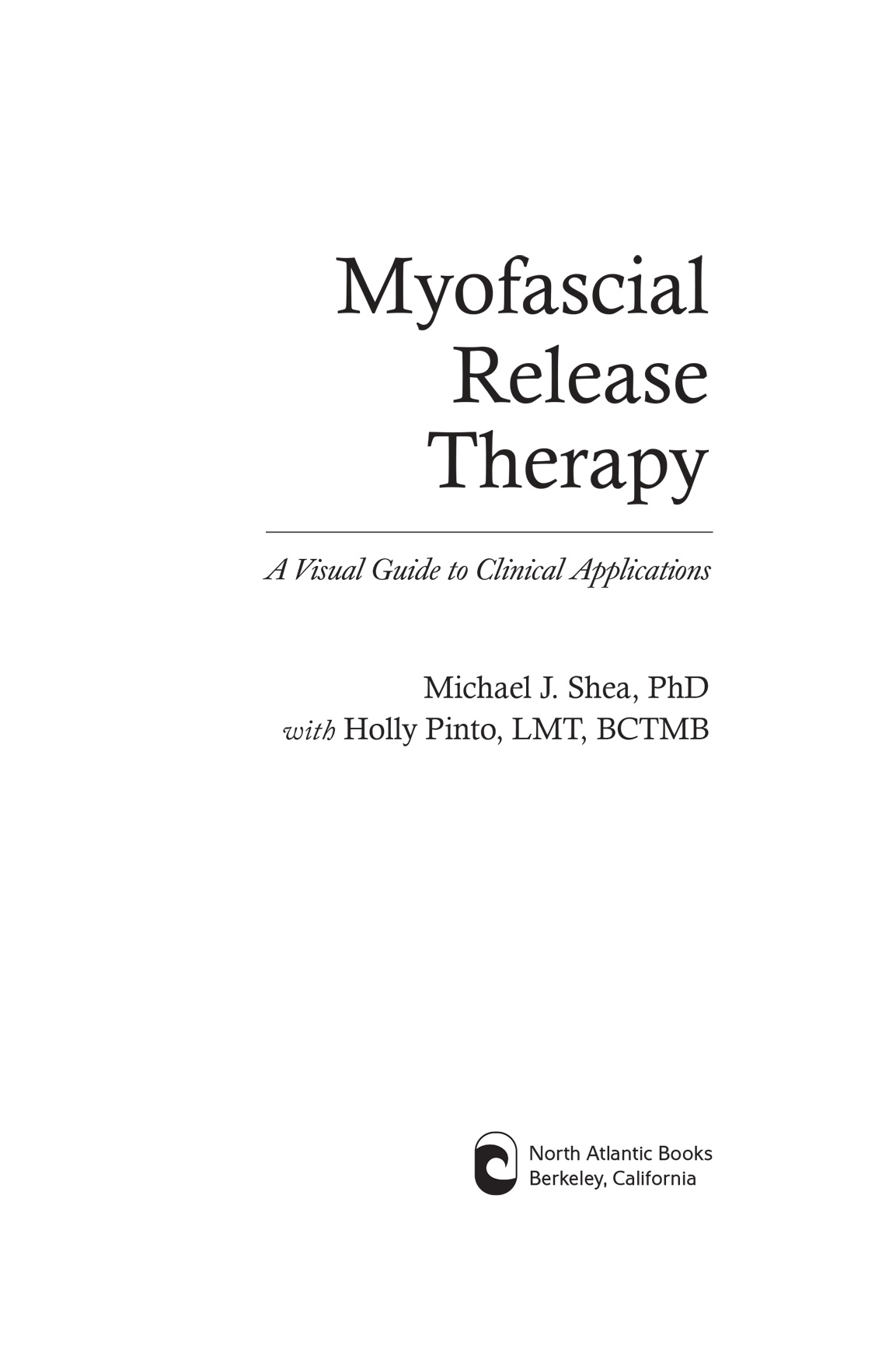Other books by Michael Shea
Biodynamic Craniosacral Therapy, Volume One
Biodynamic Craniosacral Therapy, Volume Two
Biodynamic Craniosacral Therapy, Volume Three
Biodynamic Craniosacral Therapy, Volume Four
Biodynamic Craniosacral Therapy, Volume Five
Copyright 2014 by Michael J. Shea. All rights reserved. No portion of this book, except for brief review, may be reproduced, stored in a retrieval system, or transmitted in any form or by any meanselectronic, mechanical, photocopying, recording, or otherwisewithout the written permission of the publisher. For information contact North Atlantic Books.
Published by North Atlantic Books P.O. Box 12327 Berkeley, California 94712 | Cover Cover art from The Three Graces by William Edward Frost, 1856 Cover and book design by Jasmine Hromjak Printed in the United States of America |
Myofascial Release Therapy: A Visual Guide to Clinical Applications is sponsored by the Society for the Study of Native Arts and Sciences, a nonprofit educational corporation whose goals are to develop an educational and cross-cultural perspective linking various scientific, social, and artistic fields; to nurture a holistic view of arts, sciences, humanities, and healing; and to publish and distribute literature on the relationship of mind, body, and nature.
North Atlantic Books publications are available through most bookstores. For further information, visit our website at www.northatlanticbooks.com or call 800-733-3000.
MEDICAL DISCLAIMER: The following information is intended for general information purposes only. Individuals should always see their health care provider before administering any suggestions made in this book. Any application of the material set forth in the following pages is at the readers discretion and is his or her sole responsibility.
Library of Congress Cataloging-in-Publication Data
Shea, Michael J., 1948- author.
Myofascial release therapy : a visual guide to clinical applications / Michael J.
Shea with Holly Pinto.
p. ; cm.
Includes bibliographical references and index.
eBook ISBN: 978-1-58394-846-0
Trade Paperback ISBN: 978-1-58394-845-3
I. Pinto, Holly, author. II. Title.
[DNLM: 1. Myofascial Pain Syndromes--therapy. 2. Massage--methods. WE 550]
RC925.5
616.74206--dc23
v3.1
Contents
Introduction
Holly Pinto
This manual serves many purposes for todays contemporary therapist. You can use each release found in the manual individually, or you can combine releases based on your assessment of the client and what might be indicated for your session. There are many great models of bodywork out there. Use this manual as another tool to add to your toolbox. It is more important to explore your own belief systems and biases. Then you can transition from one system of work to another staying in the rhythm of the clients nervous system, which in todays chaotic world is extremely important. Creating a safe therapeutic container to provide a skillful therapy session is the goal for a successful session. We hope you find this manual useful.
Michael Shea
I learned a lot about fascia and its manipulation at the Rolf Institute between 1979 and 1982. The work presented in this book, however, is not Rolfing. I highly recommend anyone interested in furthering their knowledge of working with the fascia to take the training at the Rolf Institute in Boulder, Colorado. My clinical practice from the beginning included many orthopedic conditions and children with spastic cerebral palsy. I was not able to apply many of the principles of organization that I learned at the Rolf Institute, and consequently began modifying what I had learned in order to adapt to the needs of my clients, especially all the infants and children I was seeing. At the same time, I was influenced by other systems of fascial manipulation such as from the osteopathic community as well as numerous colleagues working in this field. The term myofascial release comes from the original fascial manipulation developed by the osteopathic community in the early 1950s. This text is about the adaptation I made, and that my dear friend and colleague Holly Pinto has made. It is still valid now as it was when I first practiced and taught it in the 1980s.
The first place I ever taught myofascial release was in the great state of Texas in 1987. Holly Pinto was one of my first students and has continued working with the material I presented, along with integrating her own brilliant clinical skills and knowledge base in myofascial release. I am greatly honored that Holly teaches this work and spent the time to thoroughly adapt this text to the needs of the contemporary client in 2014.
This book is divided into three sections. The first section has to do with anatomy and clinical considerations. The second section comprises a photographic atlas that is thoroughly annotated, so the contemporary therapist can use it immediately in their work. Sections titled The Work provide a condensed, quick review of most of the techniques, but are not a substitute for learning this work. It is important that each release is read in full detail. The third and last section is a series of commentaries and essays that I wrote about my clinical experience. While there is some overlap and redundancy within these essays, they were originally intended as a stand-alone information guide to round out a persons knowledge base.
SECTION 1
Theory and Application
CHAPTER 1
Myofascial Release: A Holistic Approach
Although myofascial release concepts have been used for many decades, little has been documented or written about them. The system is a complex form of soft tissue manipulation based on the operators ability to monitor functional, anatomic, and neurologic influences. Developed by American osteopathic therapists, myofascial release led, with important exceptions, to clinically pertinent, fascially-based discussions almost exclusively in the osteopathic literature, but only after 1950.
(Ward, 1993, p. 225)
Still today, the study of fascia and its function as an organ of support has been largely neglected and overlooked for several decades (Findley & Schleip, 2007, p. 2). Recently, more attention is being placed on fascia and fascial research. The finest researchers and experts in the field of fascia gathered in October 2007 at the first International Fascia Research Congress. It was a sold-out conference in Boston at Harvard Medical School. The second conference was held in Amsterdam in 2009, the third was in Vancouver, British Columbia, in 2012, and a fourth is planned to be held in Washington, DC in September 2015. The focus of these conferences is to present findings on the latest research of the human fasciae system. The Fascial Research Congress is the first international conference dedicated to fascia in all its forms and functions (Findley & Schleip, 2007, p. 2).
Myofascial release is usually taught as a positioning technique or stroke intent. As a technique or intention, its primary focus is the soft tissues of the body, especially the fascia. The approaches are either direct techniques, such as Rolfing developed by Dr. Ida Rolf, or indirect techniques, such as muscle energy and strain/counter-strain (Greenman, 1989). When joint biomechanical rules, called arthrokinematics, are integrated into the treatment, the treatment is a myofascial manipulation. The presenting symptoms of the client, the physicians orders, and the evaluation skills of the therapists are combined to determine the techniques used. The continuity of treatment methods and strategies depends upon feedback from the client, clinical observations about the clients physical and emotional demeanor, and the subjective experience of the therapist. Although presenting symptoms and physicians orders are key factors, the background and training of the therapist influences the decision to use direct or indirect techniques.


